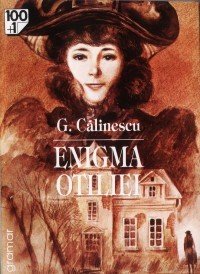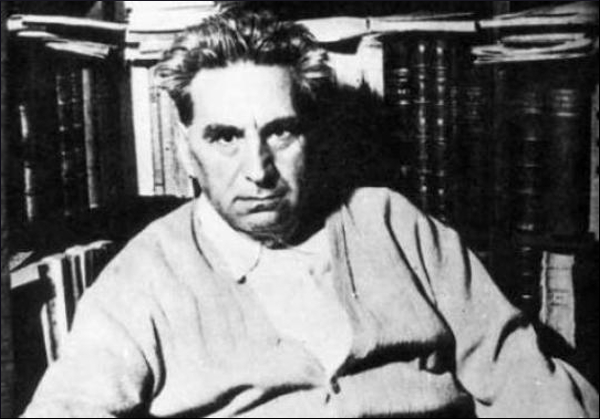
- Enigma Otiliei
- Published by: Litera Internațional
- Level: Intermediate
- First Published in: 1938
George Calinescu was a Romanian novelist, critic, historian, academic, and journalist, whose work tends to be humanist and realist. One of his finest novels, Enigma Otiliei, was published in 1938, and it focuses on the bourgeoisie populating the capital city of Bucharest at the beginning of the 20 th century.

George Calinescu was a Romanian novelist, critic, historian, academic, and journalist, whose work tends to be humanist and realist. One of his finest novels, Enigma Otiliei, was published in 1938, and it focuses on the bourgeoisie populating the capital city of Bucharest at the beginning of the 20 th century.
"The novel is highly descriptive, with lengthy and at times convoluted sentences, and there is a preference for neologisms like 'fata juvenila' (juvenile face), 'aspect bizar' (bizarre aspect), and 'barbat chic' (chic man), which accounts for the modernity of the novel."
Made up twenty chapters, it follows the overlapping lives of different characters: Otilia’s quest for happiness, Felix Sima’s road to success, and the Tulea clan’s pursuit of fortune. Felix is an orphan boy who arrives at his uncle’s house in Bucharest to study medicine. His uncle and tutor, Costache Giurgiuveanu, is a rapacious old man who lives with his step- daughter Otilia, who in turn studies the piano at the Bucharest Conservatory. The other members of the Giurgiuveanu family, as well as the Tulea clan, see Otilia as a threat and fear they might miss out on their inheritance because of her.

At his uncle’s house, Felix falls in love with Otilia, whom he finds attractive: “fata măslinie, cu nasul mic si ochii foarte albastri, trupul subtiratic, cu oase delicate” (olive-toned complexion, tiny nose, deep blue eyes, lean body, and delicate bones). The girl is only a couple of years older than him, but is capricious, overly snobbish, and likes to indulge in expensive gifts. In contrast to her, Felix is an ambitious intellectual, romantic and sensitive, but because he is totally inexperienced, he sees in Otilia the feminine ideal. His love is unrequited, as Otilia does not like to be controlled: “vreau sa fiu libera!” (I want to be free!)
However, she gets involved with a wealthy old man, called Pascalopol, who sees her as a “mare strengărită cu un temperament de artista” (a rascal with the temperament of an artist). Pascalopol cannot decide if his feelings towards Otilia are paternal or, on the contrary, of a romantic nature. But he realizes that he needs “domnişoara Otilia, ea e micul viţiu sentimental” (Miss Otilia, she is my sentimental guilty pleasure), and the two eventually get married. Felix pursues his studies and becomes a respected doctor, while Pascalopol, realizing that he shouldn’t have married Otilia, decides to let her go so she can “să-şi petreacă liberă anii cei mai frumoşi” (live the most beautiful period of her life at liberty).
The language employed by Calinescu is characteristic of the time period being depicted. In spite of the fact that the characters belong to different social strata and cultural backgrounds, the language is homogenous and the same linguistic devices are employed. The novel is highly descriptive, with lengthy and at times convoluted sentences, and there is a preference for neologisms like “fata juvenila” (juvenile face), “aspect bizar” (bizarre aspect), and “barbat chic” (chic man), which accounts for the modernity of the novel.

